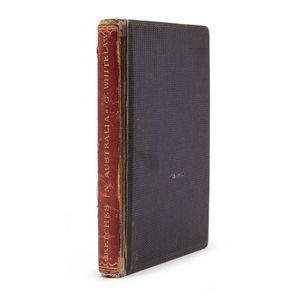Edward Hill Maple & Inlay Wardrobe, c.1940
You must be a subscriber, and be logged in to view price and dealer details.
Subscribe Now to view actual auction price for this item
When you subscribe, you have the option of setting the currency in which to display prices to $Au, $US, $NZ or Stg.
- Satinwood - Satinwood is a dense pale gold coloured timber that was imported into Britain in the second half of the 18th century, and early 19th centuries from the East Indies and the West Indies. The name derives from the satin-like surface sheen when the timber is polished.
It was used in the solid, as a veneer and in inlays. As well as furniture, satinwood was used for making musical instruments, barometers, boxes and clocks.
It will usually be found on only the very best quality objects, presumably because of of its cost at the time. - Veneers - Veneers are thin sheets of well-figured timber that are glued under pressure to the surface of a cheaper timber for decorative effect, and then used in the making of carcase furniture.
Early veneers were saw-cut so were relatively thick, (up to 2 mm) but is was realised that saw cutting was wasteful, as timber to the equivilent of the thickness of the saw was lot on each cut.
A more efficient method was devised to slice the timber, either horizontally with a knife, or in a rotary lathe.
Flame veneer, commonly found in mahogany or cedar furniture, is cut from the junction of the branches and main trunk. So-called fiddleback veneers, where the grain is crossed by a series of pronounced darker lines, is usually cut from the outer sections of the tree trunk.
During the 17th and 18th centuries, and in much of the walnut marquetry furniture made during the latter part of the 19th century, the veneer was laid in quarters, each of the same grain, so that one half of the surface was the mirror image of the other.
The use of veneer allows many other decorative effects to be employed, including stringing, feather banding, cross banding, and inlaid decorative panels in the piece. The carcase over which veneer is laid is usually of cheaper timber such as pine, oak or, sometimes in Australia during the first half of the 19th century, red cedar.
The important thing to remember about veneers is that prior to about 1850 they were cut by hand, and were consequently quite thick - ranging up to about 2mm deep.
From the mid-19th century veneers were cut by machines and were almost wafer-thin. This is a critical point when trying to judge the approximate age of veneered furniture. - Maple - Maple, native to North America, is a dense heavy timber from light to yellow-brown in colour. It has very little distincive graining unless it is one of the variants such as birds-eye maple or burr maple, so was not used extensively for furniture in 18th and 19th century, where cabinetmakers and designers preferred timbers with more distinctive features such as mahogany, walnut, rosewood and oak.
Birds-eye maple has a seres of small spots linked by undulating lines in the grain, is highly sough and is used as a decorative veneer. Burr maple has larger and irregular grain swirls than birds-eye maple. - Parquetry - Parquetry is inlay laid in geometric patterns, the contrast being achieved by the opposing angles of the grain and veneers. The herringbone pattern is the most commonly used in flooring, but this is almost never seen in furniture - the patterns used are more complex and unlike flooring, can include several different varieties of timber.
- George Vi - George VI (1895 ? 1952) was King of the United Kingdom and the Dominions of the British Commonwealth from 1936 until his death in 1952. He was the last Emperor of India, and the first Head of the Commonwealth. he was the father of Queen Elizabeth II.
- Inlay - Decorative patterns inserted into the main body of a piece of furniture, generally in wood of contrasting colour and grain, though brass, ivory, ebony, shell and sometimes horn have been used. Inlay may consist of a panel of well figured timber inset into a cabinet door front, geometric patterns, or complex and stylized designs of flowers, swags of foliage, fruits and other motifs. As a general rule, in pieces where the carcase is constructed in the solid, the inlay is relatively simple such as stringing, cross banding and herringbone banding. Where more elaborate and decorative work was required veneer was used. Inlay has been fashionable from at least the latter half of the 17th century, when a variety of elaborate forms were developed
This item has been included into following indexes:
Visually similar items

The George Whitelaw archive, A fine illustrated diary with gold embossed title to spine, titled 'Sketches in Australia by George Whitelaw, 1857 - 1864' with parrakeet feathers affixed to pages in places and containing 24 charming and mostly detailed and an

A large clutch by Fendi, style in tan leather with brown leather trim and gold metal hardware, 36.5 x 28 cm

de RAPIN, Paul [1661-1725] translated by TINDAL Nicolas [1687-1774] 'The HISTORY of ENGLAND' Vol. 1 [1743], Vol. 2 [1743], Vol.3 [1744], Vol.4 [1745], Vol.4 Part 2 [1747] plus a volume of 65+ maps and charts by Searle or Basire 'For Mr Tindal's Continuatio

HENDERSON, Alexander 'Henderson's Australian Families. A Genealogical and Biographical Record. Volume 1' [all published], 1st Edition [Melbourne, 1941]. 408 pp. with very many black and white illustrations (portraits, houses and family crests), orig. red c
